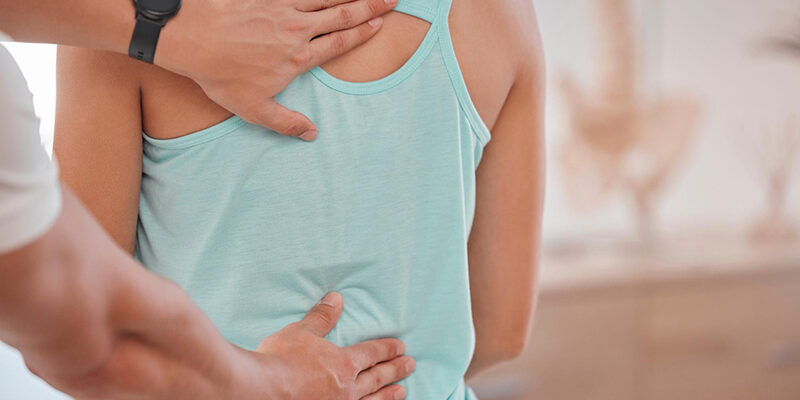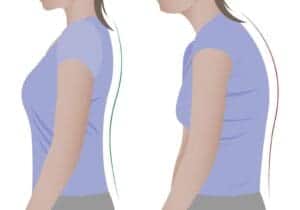Do you ever feel like your back is not quite straight? Does it seem to deviate to the left or right, or do you feel you are developing a 'hunchback'? And does this often leave you with back pain, muscle aches or perhaps you can't move as well? Then it is time to seek help from our specialised physiotherapists. This is because abnormalities in the position of your spine are called scoliosis or kyphosis. In this blog, we explain the difference between the two and tell you how we can treat both.
What is scoliosis?
Scoliosis involves a twisting and/or curvature in your spine. Scoliosis actually means 'crooked back' in Greek. With scoliosis, the spine does not stay neatly in a straight line, but can grow in curves. Sometimes in one bend, creating a curvature, but often in two bends. Scoliosis can occur during a child's growth phase, but can also be the result of the ageing process later in life. So it also occurs at all ages.
There are various causes of scoliosis to be pinpointed. For instance, it can be congenital, caused by muscle or nerve disorders, by ageing or by a postural abnormality. In about 80% of cases, however, the cause is unknown; we then call it idiopathic scoliosis.
What is kyphosis?
Whereas scoliosis often manifests as a lateral deviation, kyphosis is more of a forward bulge. A kyphosis occurs in the spine, at the level of the thoracic area. The natural S-shape in the back is enhanced, creating a bulge on the upper back, at the level of the sternum or the base of the neck. A severe case is called a hyperkyphosis, but is often more commonly known as a 'hunchback'.
The kyphosis can be congenital or caused by a congenital muscle or nerve disorder. In addition, it can also develop later in life, where it is often associated with osteoporosis and certain forms of rheumatism. As with scoliosis, poor posture can contribute to the development of kyphosis.
Complaints for scoliosis and kyphosis
- Motion restriction of the back
- Back, shoulder and neck pain
- Headaches due to neck and shoulder pain
- Balance problems
- Muscle pain
- Fatigue
- Sometimes, in very severe cases, impairment of lung function may occur
Exercise therapy and treatments
Treatment with your physiotherapist will focus on exercises to keep your back supple and strengthen your muscles. This will reduce your symptoms and allow us to work on improving your posture. The exercises are adapted to your specific situation and severity of your scoliosis or kyphosis. You will first do the exercises under the supervision of your physiotherapist and then also at home.
In addition to exercises, there is the option of wearing a brace/corset to correct the deviation in your spine. Severe cases of scoliosis or kyphosis may require surgery. Both brace treatment and surgery are always done in consultation and on referral from your orthopaedist.
Do you want to get started right away with exercises against your back pain and to improve your posture? Then follow the workout in the video below!
Would you like help with your scoliosis or kyphosis symptoms?
Or do you still have questions following this blog? Then our physiotherapists will be happy to help you. Contact us by calling 085-5000333, emailing info@friskfysio.nl or by completing the contact form on our website.









